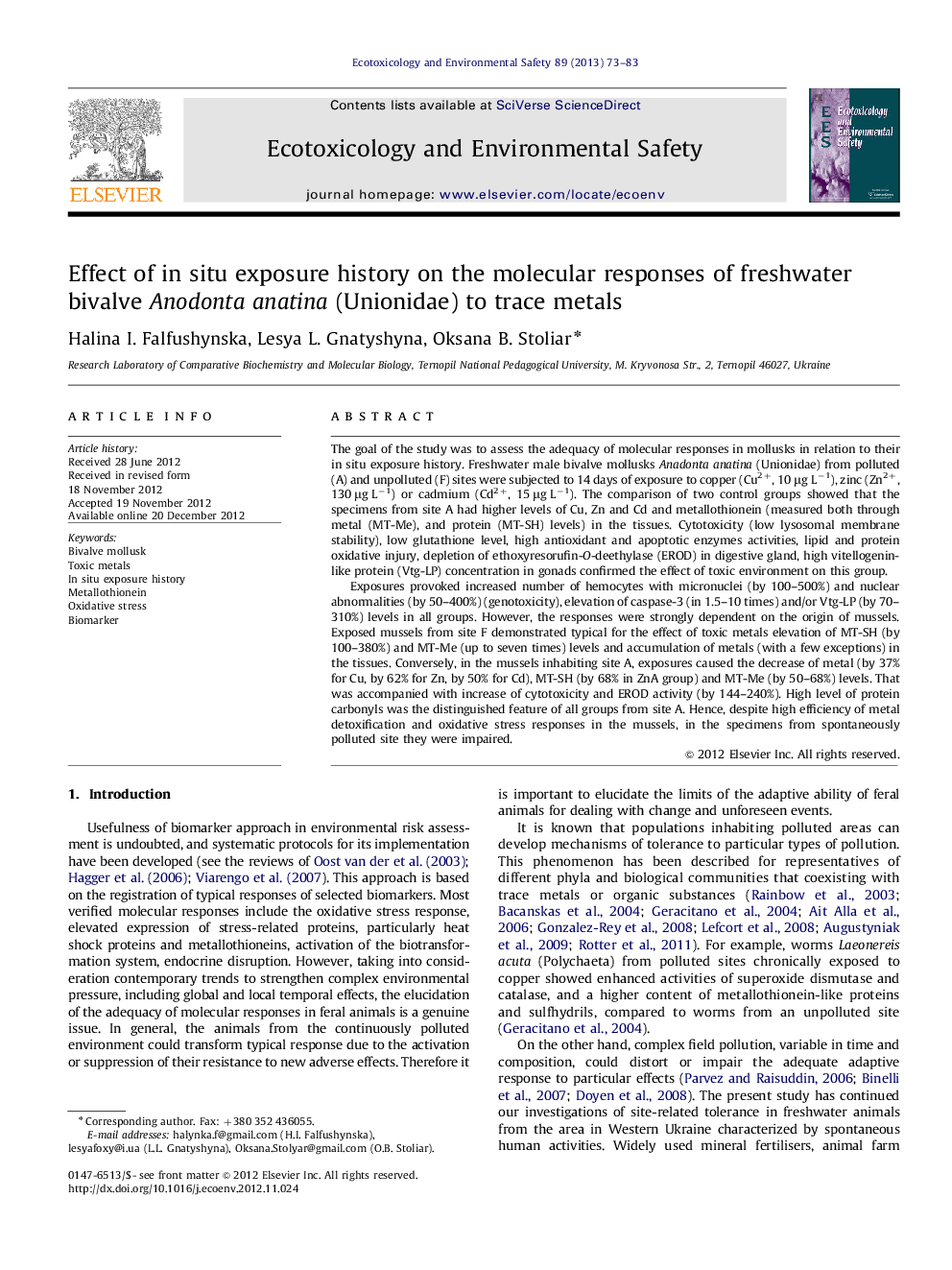| Article ID | Journal | Published Year | Pages | File Type |
|---|---|---|---|---|
| 4420586 | Ecotoxicology and Environmental Safety | 2013 | 11 Pages |
The goal of the study was to assess the adequacy of molecular responses in mollusks in relation to their in situ exposure history. Freshwater male bivalve mollusks Anadonta anatina (Unionidae) from polluted (A) and unpolluted (F) sites were subjected to 14 days of exposure to copper (Cu2+, 10 μg L−1), zinc (Zn2+, 130 μg L−1) or cadmium (Cd2+, 15 μg L−1). The comparison of two control groups showed that the specimens from site A had higher levels of Cu, Zn and Cd and metallothionein (measured both through metal (MT-Me), and protein (MT-SH) levels) in the tissues. Cytotoxicity (low lysosomal membrane stability), low glutathione level, high antioxidant and apoptotic enzymes activities, lipid and protein oxidative injury, depletion of ethoxyresorufin-O-deethylase (EROD) in digestive gland, high vitellogenin-like protein (Vtg-LP) concentration in gonads confirmed the effect of toxic environment on this group.Exposures provoked increased number of hemocytes with micronuclei (by 100–500%) and nuclear abnormalities (by 50–400%) (genotoxicity), elevation of caspase-3 (in 1.5–10 times) and/or Vtg-LP (by 70–310%) levels in all groups. However, the responses were strongly dependent on the origin of mussels. Exposed mussels from site F demonstrated typical for the effect of toxic metals elevation of MT-SH (by 100–380%) and MT-Me (up to seven times) levels and accumulation of metals (with a few exceptions) in the tissues. Conversely, in the mussels inhabiting site A, exposures caused the decrease of metal (by 37% for Cu, by 62% for Zn, by 50% for Cd), MT-SH (by 68% in ZnA group) and MT-Me (by 50–68%) levels. That was accompanied with increase of cytotoxicity and EROD activity (by 144–240%). High level of protein carbonyls was the distinguished feature of all groups from site A. Hence, despite high efficiency of metal detoxification and oxidative stress responses in the mussels, in the specimens from spontaneously polluted site they were impaired.
► We compared responses to metal (Cu, Zn, Cd) exposure in mollusks from two sites. ► Mollusks from polluted site had higher levels of metals and metallothioneins, plural signs of toxicity. ► Responses on exposures were strongly dependent on the origin of mussels. ► Only mollusks from reference site accumulated excess of metals in the tissues and metallothioneins. ► Main distinguished criteria of groups were oxidative stress indexes.
